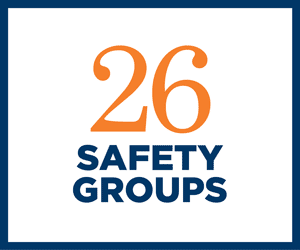Rehabilitation Settlements - A Defense Analysis
Saturday, April 12, 2003 | 0
L. C. section 4646 and CCR section 10131.2 provide that prospective VR benefits and services for a represented injured employee with a date of injury on/after 1/1/03 can be settled at any time the parties enter into a settlement agreement. The statute allows VR to be settled for any amount up to $10,000 and the regulation requires the parties to complete DWC Form RU-122 and submit it to the Unit for approval. That is the extent of the guidance provided to the parties.
So when would the parties be most likely to agree to a settlement? Technically, the agreement could occur at any time after the date of injury since there is no requirement for the injured employee to be a QIW (CCR section 10131.2). As a practical matter, defendants would not agree to a settlement without some indication that QIW is at issue so it is extremely unlikely that a settlement would occur before the P&S date.
Once an injured employee becomes P&S, applicantsᄁᄒタᄒル attorneys could push for a settlement to provide their clients with funds while resolution of the case in chief is negotiated. Defendants, on the other hand, would have an incentive to delay a VR settlement agreement as negotiating leverage to encourage a timely settlement of all issues. It therefore seems most likely that VR settlements will occur concurrently with the resolution of all issues on the claim file. It is likely to be a common occurrence for the defense attorney to call the claims examiner from the Board to indicate that the entire claim can be settled if the examiner will"...throw in $xxxx for the VR liability." Examiners with large caseloads will find it difficult to resist the temptation to resolve all issues on a claim file at one time.
So what is the value of the VR settlement? If the injured employee is clearly a QIW, applicant attorneys will argue for the full $10,000, holding the threat of the full $16,000 cap amount if defendant fails to agree to the $10,000 figure. It sounds like a "good deal" (assuming such settlements are ultimately upheld as enforceable) - but claims examiners need to consider a number of factors before entering into such agreements:
* Is the injured employee likely to use VR services? Approximately one third of all QIW injured employees never use the benefit - the employee has decided to retire, doesnᄁᄒタᄒルt perceive him/herself as ready to start rehab and fails to request services before the statute runs, etc. Should the examiner agree to pay $10,000 for these cases? Would it be more appropriate to agree to a lesser amount ($5000? $2500?)? Or "roll the dice" and take the chance that the employee will someday ask for services?
* Is the injured employee a QIW? CCR section 10131.2 allows settlement of potential liability even where medical eligibility has yet to be determined. If QIW has been raised as an issue, how much is it worth to the defense to resolve the potential liability - $500? $1000? $3000? If defendants indicate a willingness to settle such cases, will applicantᄁᄒタᄒルs attorneys find ways to create more cases with potential liability and, if so, at what cost to employer/insurers?
* Should defendants agree to settle where VR services have already commenced and, if so, for how much? L. C. section 4646 and CCR section 10131.2 do not provide guidance on settling cases in progress; the parties could - in theory - settle such cases for the full $10,000. The RU-122 does not require credit to be given for VR monies spent prior to the settlement date. Applicant attorneys will ask for the full $10,000 but examiners are likely to have problems with irate employers if they agree to a settlement amount that does not provide credit for VR monies spent prior to the date of settlement.
* Should examiners agree to a settlement where the issue of mod/alt work has not been resolved? Employers who are able to provide mod/alt work may find it rather upsetting to have a $10,000 charge against their loss experience when they if they are willing and able to re-employ the injured worker. Such settlements would also increase insurer costs because mod/alt job offers currently cost little or nothing.
L.C. section 4646 (b)(c) was intended to save money for employers but the net effect of the preceding items will serve to keep costs about the same or even increase them. No one can force the defense to agree to a VR settlement; claims examiners need to consider settlement proposals carefully to determine whether resolving the case in this manner truly serves the best interests of the insurer, employer, and injured employee.
Contributed by vocational rehabilitation expert Allan Leno, Leno & Associates, (818) 370-8859 allanleno@leno-assoc.com.
You can sponsor this article, including a link to your page for only $1.00 per exposure, or $50 for unlimited exposure.
This article is also available for license to your website, along with other workcompcentral content - different pricing packages available. Call 805-484-0333, ext 10 or write to sales@workcompcentral.com.



Comments